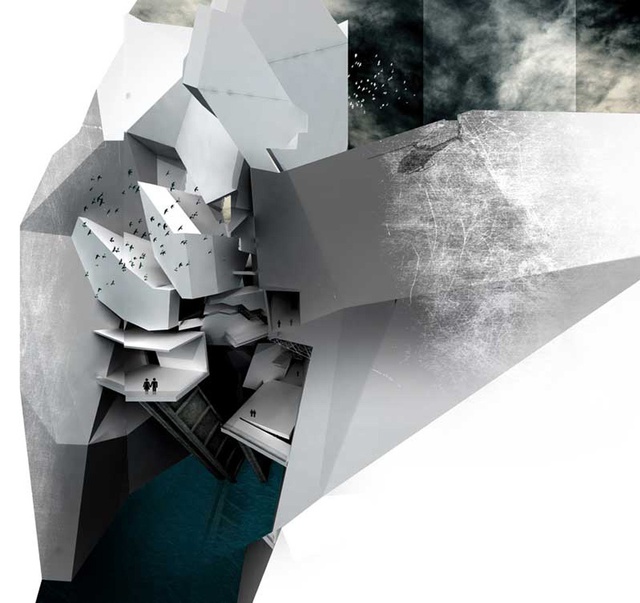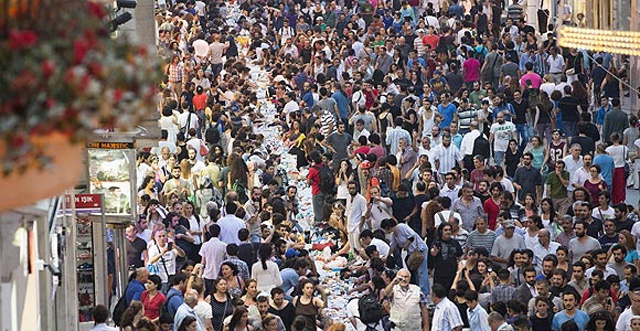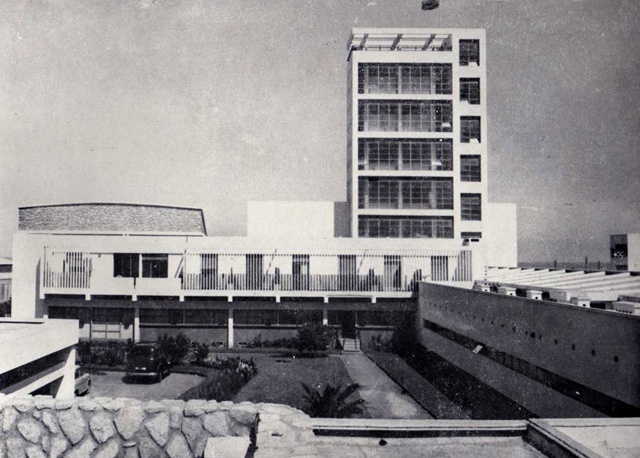Essays
Platform 007: Future Imperfect (Part II)
Building Institutions Through Practice
From May until October 2014, Platform 007 critically examined the role played by artists, institutions and audiences in producing future contexts for the production, dissemination and reception of art as a practice. In posing the question, What is the future of arts infrastructures and audiences across North Africa and the Middle East?, we were seeking to provide a critical overview of where we are now in developing sustainable institutional models and, equally, question current institutional models. These and other questions followed on from our conference Future Imperfect, which brought together an international line-up of artists, writers and cultural practitioners to consider ways in which culture can inform and shape the contours of collective futures – a challenge that seems to be further confounded, we have found, by outdated models of engagement and retrogressive institutional paradigms. In addition, we asked what new institutional forms are emerging and how current institutions are adapting, if at all, to the sociopolitical and cultural realities of the region, not to mention broader global imperatives.
Looking forward, Platform 007 will be published, in part and alongside newly commissioned essays, in November 2015, under the title Future Imperfect: Building Institutions through Practice across the Middle East (I.B. Tauris, forthcoming). This will give us further opportunity to investigate how the notion of radical engagement and, indeed disengagement – the refusal to participate – on behalf of audiences and artists alike suggests a strategy for re-imagining self-organized, socially engaged art practices beyond institutions and institutional frameworks. However, for now, the question remains: can we imagine new infrastructures and institutions in the context of historical, political, institutional, and practical realities?
In this respect, Platform 007 included many essays that directly engaged with this question from the perspective of the present. For Hadia Gana, writing about modern-day Libya in her essay 'Filling the Gaps: Arts Infrastructures and Institutions in Libya Post-Dictatorship', the direct effect that political and economical upheaval in Libya has had on the development of cultural institutions and education has been profound, to put it mildly. Observing the need to provide local and international platforms for creative and cultural projects, not least for knowledge production and cultural exchange, alongside the dissemination of information and skills (intellectual and practical), Gana asks how artists can flourish, post-revolution, and maintain a social relevance within state-run and private institutions.
A similar discussion about the future takes place in AMBS's 'Designing the Future: What Does It Mean to Be Building a Library in Iraq?', in which the architects of Baghdad's new library assess the meaning and value of that building, concluding that its potential lies in the possibility that it could reinvigorate intellectual and cultural life in what remains a country ravaged by sectarian conflict. This discussion could not be timelier bearing in mind how the US-led invasion of Iraq in 2003, as Raymond W. Baker has convincingly argued, presaged the looting of museums and the burning of libraries in Baghdad and elsewhere. For Baker, this was not an inevitable after-effect of military incompetence and negligence (which would at least offer a partial degree of mitigation by virtue of sheer idiocy), but the inevitable effect of policies that actively disregarded the imperative of protecting cultural landmarks in favour of base economic motives and short-term strategic advantages. This bias towards the strategic and the economic has left a country bereft of the very artefacts and cultural objects that are needed to give a nation a coherent – albeit contested – sense of communality and historical purchase; the very building blocks upon which history and social cohesion are based. History needs culture. And culture in Iraq, from its looted museums, burned libraries and the willful, invariably un-prosecuted murders of intellectuals and academics, was effectively annihilated – the latter being a word that broaches no nuance of immediate or even mid-term recovery. In this context, a new library could indeed herald a cultural renaissance and a sense of the communal that has been destroyed in recent decades.
The institutional contexts and the need for forms of sustainable cultural representation were also key to Reema Salha Fadda's provocative essay 'The Future of Art in the Age of Militarized De-Production', which examined the specificity of these debates in relation to Palestine, specifically Gaza. This essay was written against the backdrop of recent atrocities in Palestine and raised some uncomfortable, and at times controversial, points on how art infrastructures disrupt and constrain creative practices within the conditions of often highly charged political situations. For Gaza, and Palestine as a whole, the question of culture remains a highly political and often politicized issue. In Yemen, as Anahi Alviso-Marino's comprehensive essay suggests, the debates around public and private institutional contexts remain key to understanding how culture operates during times of heightened emergency. These ideas are traced through the work of Murad Subay, a painter in his twenties, who, following the downfall of the then president of Yemen Ali Abdallah Saleh in March 2012, chose to produce colourful murals throughout the city of Sana'a. Alviso-Marino observes that through the city the walls became an outlet for youths, painters, activists, writers, and even the military to intervene into the public space with their paintings. The intervention, begun by Subay, effectively became Yemen's largest art exhibition ever undertaken in public space. In refusing to work in established institutions, Subay used public space to engage an audience with the politics of artistic production in a manner that would have been otherwise difficulty, if not impossible, in a more conventional setting.
Again the refusal to participate in accepted institutional contexts can often be a strategy for rethinking the purpose and intentions of the latter. Oraib Toukan's essay 'We the Intellectuals' also explored the role of the artist and the intellectual in today's institutional and political climates by asking the following questions: 'If intellectualism is indeed an 'intervention', how does it get performed and embodied by the institution of art, and what visual traces does it leave behind through images that get institutionalized as signatures of protest? Furthermore, when hegemonic structures and the intellectual opposition become part of the same camp in anti-colonial movements, what implications does the critique of institutions then take?'
Over the last decade, as observed throughout Toleen Touq's essay, 'Informal Domains: Art and Culture Beyond Institutions in Amman', the arts and culture scene in the city has been growing considerably. Although cultural production is not yet on par with a capital city of three million inhabitants of complex political histories, nor is the city a destination for international curators or cultural producers, Amman has been contributing a hefty calendar of cultural events in recent years. National institutions like the Royal Cultural Centre and the Hussein Cultural Centre are budgeted for and staffed by the government and the Greater Amman Municipality respectively. They are centrally located – standing in grand architectural unison – and play host to large festivals such as the annual Contemporary Dance Festival and the Human Rights Film Festival, as well as to local and international theatre productions. Private endowment institutions have also established themselves in the realm of cultural events. Darat al Funun, for example, has initiated international contemporary art exhibitions while steadily supporting local artists.
Whilst there is an urgency to discussions about cultural institutions in Libya, Yemen, Iraq, and Jordan, respectively, these debates need context, be it historical or geographic. Whilst Iraq, Yemen, and Libya, amongst others, struggle to reconnect with their cultural histories and networks and, thereafter, develop contemporary cultural institutions, in countries such as Lebanon there remains a vibrant, occasionally precarious, institutional and historical context for the arts. In Rachel Dedman's discussion of Ashkal Alwan's Home Workspace Program, 2013-14', she compares the radical nature of its school with other independent educational initiatives, arguing that the original process of reclaiming spaces for art and debate was critical in establishing a paradigm for critique and political discussion that still characterizes much of Beirut's artistic identity. In Sultan Sooud Al-Qassemi's essay, the question of Algeria is addressed and its rich history of modern and contemporary art. Observing the extent to which Gulf cities are slowly replacing the traditional Arab capitals of Beirut, Baghdad, Cairo and Damascus as centres of culture in the Arab world, Al-Qassemi argues that Algeria can provide something of a counter-balance. Unlike Egypt, Lebanon, Iraq and Syria, not only is Algeria relatively stable, the author proposes, but it is also incredibly wealthy and almost no other Arab government outside the UAE and Qatar has invested in art and culture as the Algerians have to date.
The form of the contemporary institution, especially those that have been established throughout the region, and the emergence of Gulf States as cultural powerhouses, is further investigated in Guy Mannes-Abbott's essay 'Utopian Dust Versus Perfumed Amplification: Object Lessons from Saadiyat Island and Gehry's Guggenheim, Abu Dhabi'. The institution, as it has morphed from Paris in the eighteenth century to the UAE in the twenty-first, is understood here to be akin to a 'spectacular shop'. In suggesting as much, Mannes-Abott looks at what models have been adopted on Saadiyat Island, with what logic, and under what globalized system, and imagines a future in which the 'the model of a cultural institution or museum as visual extravaganza, predicated on a retail model of cultures, commissioned by an over-powerful national body or individual (and on unexamined whim), surrounded by retail and service industry offerings, close enough to hotels, transport hubs, and other leisure activities, and so on, is dead.' These questions are further addressed in George Katodrytis's 'Notes on Performative Urbanism: an Emergent Design Approach to the Gulf', where he argues that the role of architecture in the Arab world is a promising one if we consider how the emerging generation of talented architects who are working the region. 'As such, the role of educators of architecture', Katodrytis argues, 'in the Arab world is complex: teach the basics; understand the city and engage with it (not only historically); deal with hybrid and contradictory models; and discover unique material processes as well as using digital media in the process'.
This is of course a tall order, but it is increasingly obvious that institutions need architects who are capable of rethinking not only the relationship between public and private but also how to actively engage communities in the fabric of these questions. The question of the future of institutions and their relevance is likewise central to Sheyma Buali's 'Anachronistic Ambitions, Imagining the Future, Assembling the Past', in which she posits a complex narrative around memory, documentation, and 'conscience control' in art practices that reflect on institutional attitudes towards the past and and how they formulate material futures in the Middle East and North Africa.
Apart from essays, Future Imperfect: Building Institutions through Practice across the Middle East, will also include a series of artists' inserts. Promoting alternative educational models and free expression, the Arab Digital Expression Foundation suggest educational curricula need to be developed internally and take into account the immediate contexts of people's lives. In a manner similar to open content software and other internet interfaces, it is crucial, they argue, that formal educational structures for the arts and institutions alike engage with the Arabization of the tools needed to promote online learning and education, including contributing to sites such as Wikipedia. In addition to examining how have technological advances have changed the way institutions interact with audiences, we need to be consistently reminded of how art practices actively question, rather than promote, institutions. Jasmina Metwaly's short film surveys the relationship between the image, the spectacle and the spectator, alongside the nature of the interaction between the audience and the image. In Tarek Atoui's contribution, the concentration on audiences is, to begin with at least, a localized concern that is produced out of immediate contexts but within institutional settings; however, these imminent practices need to reach out across cultures and borders – maintain, so to speak, a resonance – and it is in this respect that the use of sound, as a repository of memory and recognition, produces a universal language. For Samah Hijawi, the question of an artist's engagement with institutions is explored through the lens of arts education in Jordan and how language – and other forms of interconnectivity – informs the relationship between audiences and cultural practices.
In Monira Al Qadiri's project Myth Busters, the conflation of burning oil fields in 1991 with the cultural institution building that took place throughout the Gulf from the 1990s onwards is offered as a case study in infrastructural determinacy. Following his extensive research on the evolution of museums in the Arabian Gulf, Qadiri observes that the researcher Alexandre Kazerouni discovered a dramatic change had arguably taken place in the early 1990s in Qatar; a change that would define the face of museum culture in the entire region. Instead of recreating the 'Heritage Museum' model that had existed in the Gulf states until that point (filled with dioramas, maps, archeological artifacts and Arabic books), Qatar decided to create the first starchitect-designed mega museum that have become a feature of the Gulf region today. The Museum of Islamic Art Qatar, designed by I.M. Pei, was the first attempt towards such a transformation. Qadiri's photo-series for Platform 007 opens up this discussion and superimposes the realized and unrealized mega-museum projects of the Gulf today onto images from the war in Kuwait in 1991, highlighting, accordingly, how destructive conflict can cause entire cultural landscapes and institutions to change and transform.
Apart from essays and artists' projects, we were very grateful to have received a number of in-depth and considered responses to our initial question, all of which can be viewed at http://www.ibraaz.org/platforms/. I would like to personally thank, amongst others, Redha Moali, Paul Vandenbroeck, Stéphanie Dadour, Youmna Chlala, Sirine Fattouh, Sherri Wasserman, Nora Razian, Judith Greer, Burak Arikan, and Asunción Molinos Gordo for the time and effort they put into their contributions, a number of which we will be developing more fully as part of our print volume, Future Imperfect: Building Institutions through Practice in the Middle East. We would also like to take this opportunity to thank all of our contributors and readers for their continued and much appreciated support. We look forward to engaging with you further over the course of Platform 008, which will examine the often occlude relationships and points of historical contact that have existed between the Middle East and so-called Global South. For more details of the latter, see http://www.ibraaz.org/news/98.









